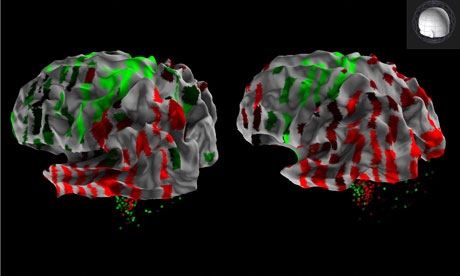Created the world's first atlas of the human brain
Last reviewed: 23.04.2024

All iLive content is medically reviewed or fact checked to ensure as much factual accuracy as possible.
We have strict sourcing guidelines and only link to reputable media sites, academic research institutions and, whenever possible, medically peer reviewed studies. Note that the numbers in parentheses ([1], [2], etc.) are clickable links to these studies.
If you feel that any of our content is inaccurate, out-of-date, or otherwise questionable, please select it and press Ctrl + Enter.
The European team of scientists, which included 12 teams of specialists from Germany, England, Israel, Switzerland, Italy, France and Denmark, completed work on creating a human brain atlas - currently the most detailed analysis of the microstructure of the human brain. In addition, specialists have done cartography of the white matter of the human brain.

Work on the project lasted three years and required considerable investments, namely 2.5 million euros, and, finally, experts presented the fruits of their labors.
The neuroanatomical picture of the brain was compiled on the basis of an analysis of brain activity processes of 100 volunteers. The brain was examined by magnetic resonance scanning.
To obtain a three-dimensional image of the neuron beams inside the brain, the researchers used the diffuse tensor imaging technique.
"The human brain is the most complex structure known to man, and also the most difficult riddle for modern science, which seeks to understand how it is organized and arranged. Our research for the first time provides an opportunity to get closer to understanding the connection between the brain and the genome, and also points out that genetic disorders can cause brain diseases, "the study authors say.
Currently, the world atlas uses a brain atlas that was made up by two volunteers who bequeathed their bodies for the benefit of science and new discoveries.
The novelty of the new atlas is the mapping of microscopic features in a white matter that contains fibers of neurons transmitting information throughout the brain.
The results of the project, obtained with the help of advanced image processing techniques, provide a new depth and accuracy of understanding the processes of the human brain both in a healthy state and in the presence of pathologies.
These images will serve as a benchmark for future brain research, and also used for medical purposes.
The findings will significantly contribute to future research in the study of white matter in the brain. It so happened that the vast majority of studies were aimed at understanding and studying gray matter and neurons, while white matter was given relatively little attention.
With the help of a new atlas, investigators and physicians will be able to compare the samples with images of the corresponding brain structures of a healthy person. Brain Atlas is undoubtedly a very useful thing in developing new diagnostic methods, and it is also important in studying the processes taking place in the human brain.

 [
[